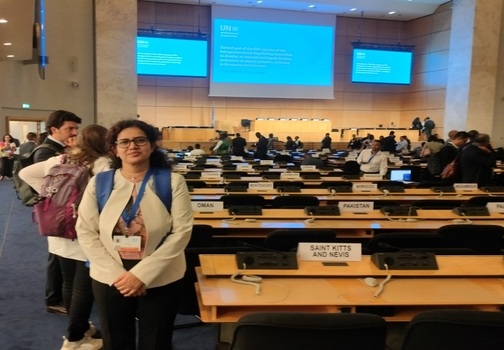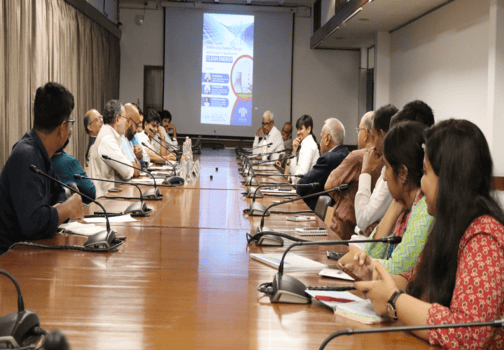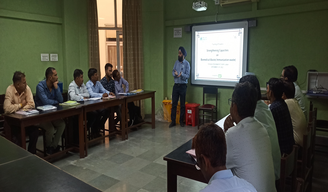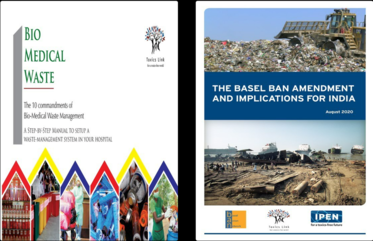ANTIMICROBIAL RESISTANCE
GOVERNMENT OF INDIA
MINISTRY OF HEALTH AND FAMILY WELFARE
DEPARTMENT OF HEALTH AND FAMILY WELFARE
RAJYA SABHA
UNSTARRED QUESTION NO. 2532
TO BE ANSWERED ON 17.12.2024
ANTIMICROBIAL RESISTANCE
2532. MS. DOLA SEN:
Will the Minister of HEALTH AND FAMILY WELFARE be pleased to state:-
(a) whether Government has taken any initiative to reduce the effect of antimicrobial resistance;
(b) if so, the details of steps taken during 2021-23, if not, the reason therefor;
(c) whether Government has conducted any study to understand the effect of antimicrobial resistance
upon children; and
(d) if so, the details thereof and if not, the reasons therefor?
ANSWER
THE MINISTER OF STATE IN THE MINISTRY OF HEALTH & FAMILY WELFARE
(SHRI PRATAPRAO JADHAV)
(a) & (b) Antimicrobial Resistance (AMR) is a complex issue with significant implications for both
individuals and healthcare systems. MoH&FW has taken several steps to address the issue of AMR. Some of the steps are:
i. National action plan on containment of Antimicrobial Resistance (NAP-AMR) focusing on One
Health approach was launched in April 2017 with the aim of involving various stakeholder
ministries/departments. Delhi Declaration on AMR– an inter-ministerial consensus was signed by
the ministers of the concerned ministries pledging their support in AMR containment.
ii. Under the NAP-AMR programme state medical college labs are being strengthened in phased
manner for AMR surveillance and containment activities
iii. AMR Surveillance Network: ICMR has established AMR surveillance and research network
(AMRSN) comprising tertiary care hospitals, both private and government to generate evidence and
capture trends and patterns of drug resistant infections in the country.
iv. AMR Research & International Collaboration: ICMR hastaken initiativesto develop new drugs
/medicines through international collaborations in order to strengthen medical research in AMR.
A details of the steps taken by the Government to address AMR is provided in Annexure.
(c) & (d) Government is monitoring the effect of microbial resistance on general population including
children. The data & report can be seen at the following link;
https://www.icmr.gov.in/icmrobject/uploads/Documents/1725536060_annual_report_2023.pdf
https://ncdc.mohfw.gov.in/reports.
ANNEXURE
ANNEXURE REFERRED TO IN REPLY TO PART (a) & (b) OF THE LOK SABHA UNSTARRED
QUESTION NO. 2532 FOR 17.12.2024 REGARDING ANTIMICROBIAL RESISTANCE
1. Strengthen surveillance of antibiotic consumption at state medical college hospitals included under the National Programe on Antimicrobial Resistance Containment.
2. Establish and strengthen implementation of Infection Prevention & Control practices including
surveillance of health care associated infections and antimicrobial stewardship practices at network
sites in a phased manner.
3. Establish and strengthen State level AMR Surveillance networks.
4. Workshops on antibiogram preparation and monthly online trainings on data management,
antibiotic consumption are conducted by NCDC under the programme for the new and old network
sites.
5. India has been successfully enrolled in GLASS (Global antimicrobial surveillance system)
coordinated by WHO in the year 2017. AMR surveillance data submitted by the programme sites
are analysed, and uploaded onto GLASS since 2018. Annual report since 2018 is developed and
made available on NCDC website at following link: https://ncdc.mohfw.gov.in/reports/.
6. IEC activities like public conclave, poster and quiz competitions, etc were conducted in schools,
colleges and Health mela under the National Programme to create awareness on the AMR among
the common public.
7. The National AMR surveillance Network (NARS-Net) established under the programme has been
expanded from 30 labs in 24 states/UTs in 2021 to 40 state medical colleges in 31 states/UTs till
March 2023.
8. Several offline & online trainings on lab procedures, data management and yearly review meetings have been conducted for network sites.
9. Revised Standard operative procedures for the AMR programme has been developed and
disseminated to the site at following link: https://ncdc.mohfw.gov.in/






